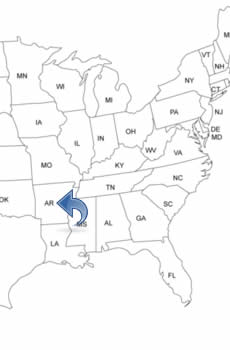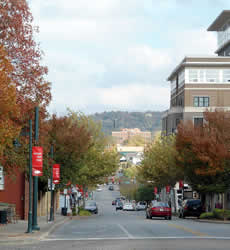ARKANSAS PEOPLE SEARCH!
- ✔ Contact Info
- ✔ Phone Numbers
- ✔ Criminal Records
- ✔ Income Info
- ✔ Neighbors
- ✔ People's Age
- ✔ Property Ownership
- ✔ And Much More
Fayetteville, Arkansas
Fayetteville is located in the northwest region of Arkansas and is the third largest city in the U.S. State of Arkansas. The city is often named among the best places in the USA to live. In fact, Fayetteville is one of the top places to live and work in, according to the Forbes magazine. The University of Arkansas is Fayetteville's biggest attraction.
To See And To Do In Fayetteville
- The University of Arkansas
- Clinton House Museum
- Devil's Den State Park
- Farmers Market
- Dickson Street
- Fayetteville Downtown Square and Gardens
- Botanical Garden of the Ozarks
- Wilson Park
- Baum Stadium
History Of Fayetteville - Timeline
French traders had likely been in the area long before 1800's but in 1819, Frank Pierce was hunting buffalo where Fayetteville now exists. It is the first recorded visit. Fayetteville was founded in 1828. George McGarrah and his family were the first settlers in Fayetteville. In 1829, the Washington Courthouse was finished. In 1832, the Methodist Church was established. In 1833, the first store in Fayetteville was opened.
In 1835, judge Archibald Yell built a house, an office, and a guesthouse, and in 1836, the city got its first brick house. In 1838, the Walker Family Plot historic cemetery was built. In 1839, Sophia Sawyer established the Fayetteville Female Seminary. It was a quality education for girls. In 1840, the Ridge House was built and 425 people now lived in the city and the first newspaper, The Witness, was published. In 1845, Judge David Walker buil the Walker-Stone House.
In 1847, the Evergreen Cemetery was completed. In 1850, the The Routh-Bailey House was completed. In 1851, the Troy Gordon House (Old Anderson Farm) was built. In 1859, the pro-slavery newspaper, the Arkansan, was founded. The telegraph came to Fayetteville in 1860. Also in 1860, the Goff Farm Stone Bridge was built. In 1866, the Jackson House and the Wilson-Pittman-Campbell-Gregory House was built. In 1867, the Fayetteville National Cemetery was completed. The Fayetteville Weekly Democrat began publishing in 1868. This paper would eventually become the Northwest Arkansas Times. The paper is still in print today. Also in 1868, one of the region's largest landowners completed the Nathan Combs House.
In 1870, the John S. Vest House was built by John S. Vest, who owned a brickmaking operation. The Fayetteville Schools District was founded in 1871 as the first independent school district in Arkansas. Also in 1871, the attorney and the president of the Bank of Fayetteville, Lafayette Gregg, completed the Gregg House. In 1872, a brick church and the Walker House was built. In 1873, the Fayetteville Confederate Cemetery was completed. Also in 1873, the Wade-Heerwagen House was built. In 1881, the first train arrived. In 1886, the town had telephones, and the Peter Smyth House, and the Washington County Jail was built. In 1887, the Mrs. Young Building was completed. In 1888, the Bank of Fayetteville was established. Also in 1888, the Wiley P. McNair House was built.
In 1900, more than 4,000 people lived in the town. In 1904, the Skillern House was built. In 1905, the Washington County Courthouse was built. In 1907, the Hemingway House and Barn was completed. In 1908, the Lewis Brothers Building was completed. In 1909, the Happy Hollow Farm was built. In 1911, the Old Bank of Fayetteville Building was completed. In 1916, the first public library opened. In 1918, the first streets were paved. In 1927, the University of Arkansas Agriculture Building was completed. In 1931, the Clinton House was built. The house was built by H. H. Taylor, owner of the newspaper Fayetteville Daily Leader. It later become the Clinton House when Bill Clinton and Hillary Rodham lived there. In 1934, the baseball team, The Fayetteville Educators, played its first game. In 1966, the Beaver Dam was completed.

